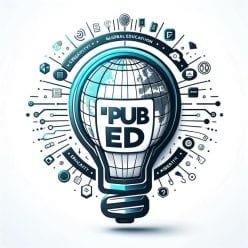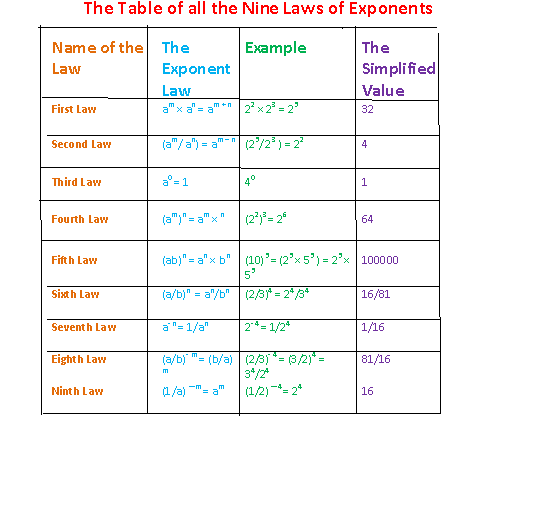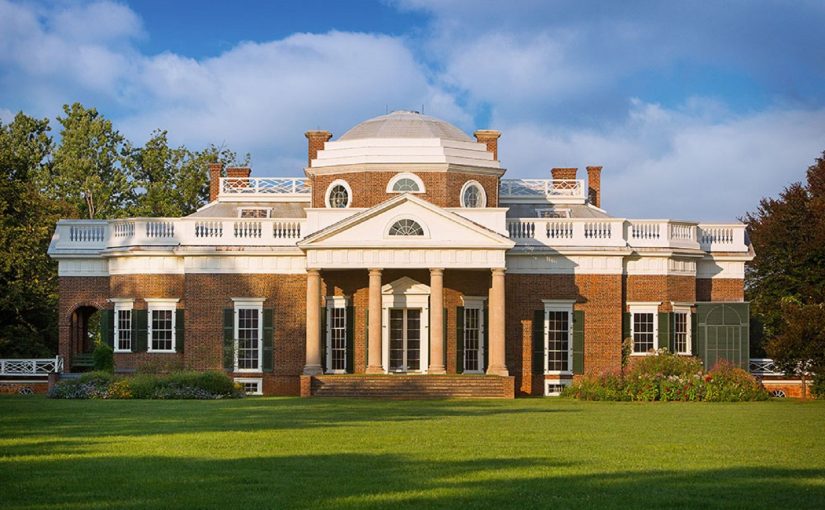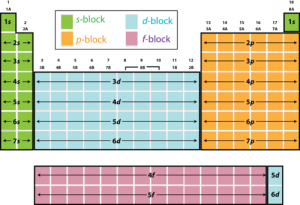Author: Lauren Feist
Affiliation: SUNY Stony Brook University
Publication Year: 2023 (Revised edition)

Title: Pathogens, Evolution, and the Role of Viral Pathogens: Insights into Genetic Variation, Disease Processes, and Evolutionary Change
Abstract:
Pathogens, including viruses, play a significant role in shaping genetic composition and driving evolutionary processes within populations. Through various mechanisms, pathogens introduce genetic mutations into host genomes, leading to new genomic and epigenetic effects. These mutations can contribute to natural selection by conferring advantages or disadvantages in survival and reproduction. The study of pathogenesis and evolution requires collaboration among different scientific disciplines, such as genetics, virology, biology, and chemistry.
By analyzing the genomic composition of infective agents, researchers gain insights into the relationships between pathogens and hosts, as well as the impact of these interactions on evolutionary change. Understanding how pathogens influence genetic variation, frequencies, and mutations provides valuable information about disease processes and the conservation of specific traits. The field of proteogenomics, which combines proteomics and genomics, allows for the exploration of protein structure, function, and expression in relation to genetic variations.
Sequencing entire genomes has revolutionized genetics, providing valuable insights into gene structure and function. Proteomic techniques and the study of post-translational modifications offer new avenues to explore the functions of proteins and their interactions with the genome and epigenome. Mapping protein form and function contributes to a better understanding of disease processes and the development of disease prevention and treatment strategies.
The evolution of pathogens, including antibiotic and disease resistance, is an important area of study within evolutionary development. Pathogens exert selection pressures on populations, leading to the survival and reproduction of resistant variants. Understanding the mechanisms and implications of antibiotic resistance is crucial for developing effective strategies to combat evolving pathogens.
The Borna virus serves as an illustrative example of an endogenous non-retroviral RNA virus. It replicates within human hosts, infiltrating the cell nucleus and transmitting through germ cells. The viral information is distributed within the genomic structure of subsequent generations, influencing gene expression through various mechanisms. The integration of viral genetic material into the host genome raises questions about its potential epigenetic effects and its role in human behavior and mental illnesses.
Further exploration of the human genome and mammal genomes reveals a greater viral component than previously recognized, indicating the existence of fossil viruses with implications for disease understanding and treatment. Viral pathogens, as non-living vectors, uniquely influence their own evolutionary trajectory by invading host organisms. The study of viral pathogens expands our understanding of evolutionary change and selection in living organisms.
Viral evolution can occur within host cells as well as through transmission between different host species, emphasizing the importance of tracking and projecting the evolution of pathogens for effective interventions. Integrating knowledge of viral integration, tumorigenesis, and core transcriptional features associated with neoplastic transformations provides insights into selection pressures, mutagenic changes, and mortalities in global populations. Understanding these mechanisms is crucial for the development of efficient disease management and prevention strategies.
The study of pathogenic populations and their role in evolution provides valuable insights into disease processes, genetic variation, and natural selection. By exploring genomic composition, mutations, and protein functions, researchers unravel the complex relationship between pathogens, hosts, and evolutionary change. This interdisciplinary field of research enhances our understanding of disease prevention, treatment strategies, and the broader implications of evolution in medical sciences.
Overall, this interdisciplinary research field, ( “Evo-Devo Pathogenetics”) contributes to our understanding of disease processes, genetic variation, and natural selection. The exploration of pathogenic populations and their role in evolution has far-reaching implications for disease prevention, treatment strategies, and the broader understanding of evolution in the medical sciences.
Keywords: pathogenesis, evolution, genes, pathogens, genetic variation, proteogenomics, antibiotic resistance.
Here is an expanded section with additional information and a chart highlighting the genes that are potentially involved in the processes described:
Pathogens, including viruses, play a significant role in shaping the genetic composition of populations and driving evolutionary processes. They introduce genetic mutations through various mechanisms, such as integrating their genetic material into the host genome, leading to new genomic and epigenetic effects. These mutations can contribute to natural selection by conferring advantages or disadvantages in survival and reproduction.
The study of pathogenesis and evolution requires collaboration among different scientific disciplines, including genetics, virology, biology, and chemistry. By analyzing the genomic composition of infective agents, researchers can gain insights into the relationships between pathogens and their hosts, as well as the impact of these interactions on evolutionary change. Understanding how pathogens influence genetic variation, frequencies, and mutations provides valuable information about disease processes and the conservation of specific traits.
Mutations, which can arise spontaneously or be caused by mutagenic factors, are essential for evolution by natural selection. They contribute to the diversity and polymorphic variances within populations and can be inherited through reproduction. Studying mutations and their effects on gene function and protein production deepens our understanding of the genetic basis of diseases and complex traits. The field of proteogenomics, which combines proteomics and genomics, allows for the exploration of protein structure, function, and expression in relation to genetic variations.
Sequencing entire genomes has been a groundbreaking advancement in genetics, providing insights into the structure and function of genes. Proteomic techniques and the study of post-translational modifications offer new avenues to explore the functions of proteins and their interactions with the genome and epigenome. By mapping the form and function of proteins, researchers can gain a better understanding of disease processes and potentially develop strategies for disease prevention and treatment.
The evolution of pathogens, including antibiotic and disease resistance, is an important area of study within the context of evolutionary development. Pathogens exert selection pressures on populations, leading to the survival and reproduction of resistant variants. Understanding the mechanisms and implications of antibiotic resistance is crucial for developing effective strategies to combat evolving pathogens.
The study of pathogenic populations and their role in evolution provides valuable insights into disease processes, genetic variation, and natural selection. By exploring the genomic composition, mutations, and protein functions, researchers can unravel the complex relationship between pathogens, hosts, and evolutionary change. This interdisciplinary field of research has the potential to enhance our understanding of disease prevention, treatment strategies, and the broader implications of evolution in the medical sciences.
Now, let’s chart some of the genes that are potentially involved in these processes:
| Gene Name |
Function |
| p53 |
Tumor suppressor gene, regulates cell cycle and apoptosis |
| E6 |
Oncogenic protein of Human Papillomavirus |
| E7 |
Oncogenic protein of Human Papillomavirus |
| LINE |
Long Interspersed Repetitive Elements |
| URR |
Upstream Regulatory Region of HPV |
| H1N1 |
Influenza virus strain |
| HIV |
Human Immunodeficiency Virus |
| Various oncogenes and tumor suppressor genes |
Involved in neoplastic transformation and progression |
Please note that this is not an exhaustive list, and there are numerous other genes and genetic elements that play significant roles in pathogenesis, evolution, and disease processes. The specific genes involved can vary depending on the pathogen and the host species under study.
Pathogens, including viruses, play a significant role in shaping the genetic composition of populations and driving evolutionary processes. Pathogens can introduce genetic mutations through various mechanisms, such as integrating their genetic material into the host genome, leading to new genomic and epigenetic effects. These mutations, in turn, can contribute to natural selection by conferring advantages or disadvantages in survival and reproduction.
The study of pathogenesis and evolution requires collaboration among different scientific disciplines, including genetics, virology, biology, and chemistry. By analyzing the genomic composition of infective agents, researchers can gain insights into the relationships between pathogens and their hosts, as well as the impact of these interactions on evolutionary change. Understanding how pathogens influence genetic variation, frequencies, and mutations can provide valuable information about disease processes and the conservation of specific traits.
Mutations, which can arise spontaneously or be caused by mutagenic factors, are essential for evolution by natural selection. Mutations can be inherited through reproduction, and they contribute to the diversity and polymorphic variances within populations. By studying mutations and their effects on gene function and protein production, researchers can gain a deeper understanding of the genetic basis of diseases and complex traits. The field of proteogenomics, which combines proteomics and genomics, allows for the exploration of protein structure, function, and expression in relation to genetic variations.
Sequencing entire genomes has been a groundbreaking advancement in genetics and has provided valuable insights into the structure and function of genes. The ongoing development of proteomic techniques and the study of post-translational modifications offer new avenues to explore the functions of proteins and their interactions with the genome and epigenome. By mapping the form and function of proteins, researchers can gain a better understanding of disease processes and potentially develop strategies for disease prevention and treatment.
The evolution of pathogens, including antibiotic and disease resistance, is an important area of study within the context of evolutionary development. Pathogens can exert selection pressures on populations, leading to the survival and reproduction of resistant variants. This phenomenon can be likened to predators and prey, where antibiotics act as the predator, killing some bacteria while allowing resistant variants to survive and proliferate. Understanding the mechanisms and implications of antibiotic resistance is crucial for developing effective strategies to combat evolving pathogens.
The study of pathogenic populations and their role in evolution provides valuable insights into disease processes, genetic variation, and natural selection. By exploring the genomic composition, mutations, and protein functions, researchers can unravel the complex relationship between pathogens, hosts, and evolutionary change. This interdisciplinary field of research has the potential to enhance our understanding of disease prevention, treatment strategies, and the broader implications of evolution in the medical sciences.
The Borna virus serves as an illustrative example of an endogenous non-retroviral RNA virus. Endogenous viruses originate within the tissues, organisms, or cells themselves and can impact the genetic makeup and functioning of the host. Empirical evidence suggests that the Borna virus is capable of replicating within human hosts by infiltrating the cell nucleus and subsequently transmitting through germ cells such as spermatozoa and oocytes. During gametogenesis, when germ cells from progenitor species merge, the viral information is often distributed within the genomic structure, specifically the chromosomes, of subsequent generations. The offspring’s genome becomes influenced by the provirus, which is the latent or concealed derivative of the Borna virus that has successfully integrated into the genomic structure. This integration occurs in regions where reverse transcriptase activity takes place or is encoded in Long Interspersed Repetitive Elements (LINE) or Long Interspersed Nuclear Elements (LINE).
It is plausible to speculate that this process could potentially trigger an epigenetic effect within certain loci of gene expression, leading to various outcomes such as epigenetic silencing, linkage, epistasis, null effects, or deletion mutations. In addition to these conjectures, the Borna virus has been identified as “replacing” the function of reverse transcriptase activity along LINE-1, where DNA copies of RNA are synthesized and inserted into the genome. Over generations, the viral DNA undergoes mutations, eventually losing its ability to mutate and becoming disabled.
Considering the aforementioned, one might question whether these viral remnants act as mediators of susceptibility to other viruses through overlapping protein sequences in a domain. In fact, an inverse relationship of this nature appears conceivable when examining the research of Dr. Keizo Tomonaga, a virologist at Osaka University, who fortuitously discovered that four segments of human DNA share clear ancestry with the Borna virus. Dr. Tomonaga’s theory proposes that the Borna virus did not invade mammalian genomes but rather that the genomes “kidnapped” the viruses, suggesting a synergistic relationship between human and viral genes. He suggests that LINEs, which have the ability to create copies of themselves, captured genes from the Borna virus and reintegrated them back into the genome. If this hypothesis holds true, it is possible that LINEs have also acquired genes from other viruses and utilized genetic material from those viruses in advantageous ways.
In his article “Hunting Fossil Viruses in Human DNA” (2010), Carl Zimmer mentions that the neurotropic Borna virus is just one of many viruses that infect mammals and birds. It is worth noting that birds, insects, and humans share a unique relationship, as vectors like mosquitoes are known to transmit viruses across species boundaries. Consequently, the presence of the Borna virus in various species is not surprising. Zimmer further explains that some species infected with this virus exhibit no symptoms, thereby rendering the effects of the infectious agent largely enigmatic, with specific exceptions. For instance, horses have been observed to display behavioral effects, such as wild fits that may lead to self-inflicted fatal injuries or starvation. Researchers have postulated a correlation between the Borna virus and human behaviors indicative of disorders such as schizophrenia. However, when considering the recent identification of protozoa affecting human behaviors and their role as pathogens or parasites underlying disorders like schizophrenia, we may gain further insight into the influence of pathogenesis on behaviors. The idea that pathogenesis can contribute to mental illness or influence behavior remains a topic of controversy, analogous to the initial debates surrounding the proposition of humans descending from primates. Anticipating a potential controversy over the notion that humans have limited control over their behaviors, the identification of pathogens responsible for behavioral influences could pave the way for targeted interventions and potentially lead to cures for various mental illnesses.
An alarming hypothesis, should it be considered conclusive, suggests that around 40 million years ago, the Borna virus infected our primate-like ancestors. Viruses are estimated to be present in approximately 8% of the genome in every individual on Earth, primarily in the form of endogenous non-retroviral RNA virus elements in mammalian genomes. To put this percentage into perspective, it is seven times greater than the DNA content of all the 20,000 protein-coding genes in the human genome. The completion of the human genome sequencing in 2001 revealed that several segments of human genes bear resemblance to retroviral genes. While scientists have identified connections between approximately 100,000 viral elements, mostly originating from retroviral infections, imprinted within the human genome, the discovery of the Borna virus as a component of the human genome represents a novel finding. This suggests that many other viruses may still await discovery within the human genome. Consider the implications of unraveling the form and function associated with these viruses—what other insights could be gained about known or unidentified diseases and their potential treatments?
The Borna virus is not the sole instance of fossil viruses revealed through gene mapping and referencing databases containing human genome sequences. Researchers are expanding their scope beyond the human genome and capitalizing on the growing number of mammal genomes available in online databases to elucidate the evolutionary history of viruses dating back millions of years. Collectively, these investigations provide compelling evidence that humans and other species have a greater viral component than previously recognized.
Of all the various pathogens I will discuss, viral pathogens, or “pathogenes” as I prefer to refer to them, hold particular significance. Unlike other pathogenic agents such as prokaryotes, archaea, and protozoa, viruses are technical, non-living vectors. Viruses uniquely possess genetic material that is not alive per se, requiring invasion of host organisms for survival and replication, thereby influencing their own evolutionary trajectory. The optimal conditions for viral evolution often arise when the host organism is not exploited to the point of death, ensuring the virus’s survival and reproduction in greater numbers. This concept theoretically applies to viruses, as it serves as the foundation for evolution through natural selection in living organisms. However, it is also plausible that certain viral pathogens may evolve by exploiting a host to the point of fatality while concurrently being transmitted to another host, facilitating evolutionary changes in both the host and viral populations. Viruses may evolve as they multiply within cells and reproduce. Is there a limited advantage, yet an advantage nonetheless, for viral pathogens gained by integrating into the host genome either during active infection or afterward as proviruses that are inherited by subsequent generations, thereby preventing their complete obsolescence? In my view, the answer is likely affirmative. This driving force of evolution is not limited to humans and animals but may extend to interactions between prokaryotes, archaea, and protozoa—what I term the “pathogen-to-pathogen route.” For example, eubacteria may be exploited by a viral population, presenting a symbiotic advantage in both populations. When examining the relationships between eukaryotes, prokaryotes, and archaea, we should explore a pathogenic phylogeny encompassing all domains and subsequent taxonomies.
Oncoviruses, which promote tumorigenesis in humans and animals, represent another extensively researched topic that expands our understanding of how viral pathogens can drive evolutionary change or at least fulfill the criteria necessary for selection to occur.
Interfering with the action of p53 allows a virus-infected cell to progress into a different stage of the cell cycle, promoting replication of the virus genome. Forcing the cell into the S phase of the cell cycle can potentially lead to cellular transformation (Scheffner et al., 1990).
According to a study conducted by the National Cancer Institute, HPV 16 is the most common type, accounting for 61% of cervical cancers, followed by HPV 18 at 9%. Types 33, 45, 58, and 59 were each found in one specimen. Analysis of the genomic sequences of HPV 16-positive isolates revealed distinct patterns of stability and variability in the upstream regulatory region (URR) and the E6 and E7 genes. Mutations were observed in 5% of the URR, including a large deletion in one isolate and various point mutations affecting regulatory sites. More sequence variations were found in the E6 gene compared to the E7 gene. Mutations in these genes, which encode the oncogenic proteins essential for malignant transformation, may impact the oncogenicity of the virus by altering amino acid sequences or transcription factor binding sites (Human Papillomaviruses and Cancer, National Cancer Institute, 2008; Int. J. Cancer 86:695-701, 2000).
Furthermore, it has been observed that viral evolution can occur not only within host cells but also through transmission between different host species. Examples include the H1N1 influenza virus, which originated in swine populations and crossed the species barrier to infect humans, as well as avian influenza viruses undergoing multi-species crossing-over.
In terms of gene expression and profiling, a large-scale meta-analysis of cancer microarray data revealed common transcriptional profiles associated with neoplastic transformation and progression. This analysis examined 40 published cancer microarray datasets, encompassing over 3,700 cancer samples and 38 million gene expression measurements. The findings indicated a common transcriptional profile in various forms of undifferentiated cancers, suggesting core transcriptional features associated with neoplastic transformations and the perpetuation of cancer development (source: Large-scale meta-analysis of cancer microarray data identifies common transcriptional profiles of neoplastic transformation and progression).
These findings highlight the significance of viral integration within the human genome and its role in driving evolutionary changes, with tumorigenesis being one measurable outcome. Understanding these mechanisms is crucial in medical science, as it provides insights into selection pressures, mutagenic changes, and mortalities in global populations. By comprehending the evolutionary aspects, research can be directed towards developing effective treatments and prevention strategies. Targeting the most virulent strains of pathogens while minimizing harm to the host appears to be a promising approach for disease management and prevention of resistance. However, in the case of HIV, all variants of the virus exploit the host in harmful ways, posing challenges for this approach. Thus, closely tracking and projecting the evolution of pathogens is crucial for the development of efficient interventions.
Citations
1.Tomonaga K, Kobayashi T, Ikuta K. 2002. “Molecular and cellular biology of Borna disease virus infection”. Microbes Infect 4 (4): 491–500. doi:10.1016/S1286-4579(02)01564-2. PMID 11932200.
2. DETECTION OF THE BOVINE LEUKOSIS PROVIRUS IN THE BLOOD AND SEMEN SAMPLES OF BULLS. Reza Asadpour. Razi Jafarei, Clinical Science, Faculty of Vet.Med. University of Tabriz, 2Faculty Veterinary Medicine, 3Clinical Science, University of Tabriz, Tabriz, Iran
3.Clonal integration of a polyomavirus in human Merkel cell carcinoma. Feng H, Shuda M, Chang Y, Moore PS. 2008. Science 319 (5866): 1096–100. doi:10.1126/science.1152586. PMID 18202256)
4.Aids Related Cancers. Gale Encyclopedia of Cancer.
5.Identified Kaposi sarcoma-related herpes virus in 1994 by using representational differences analysis (RDA) that compared the differences in the genomic sequences of cDNA samples. Schmidt, C. 2008. “Yuan Chang and Patrick Moore: Teaming Up To Hunt Down Cancer-Causing Viruses”. JNCI
Journal of the National Cancer Institute 100: 524. doi:10.1093/jnci/djn122. ; 31- “Ethel Cesarman, M.D., Ph.D. | Weill Cornell Medical College”. Med.cornell.edu. Retrieved 2010-03-17.]
/ Patrick Moore, Yuan Chang, Frank Lee and Ethel Cesarman. 1994.
6.HIV: The Ultimate Evolver. Understanding Evolution. adapted from Evolution: The Triumph of an Idea, by Carl Zimmer, © 2001, Harper Collins Publisher.
7.Evaluating plague and smallpox as historical selective pressures for the CCR5-Δ32 HIV-resistance allele. Alison P. Galvani, Montgomery Slatkin. Department of Integrative Biology, University of California, Berkeley, CA. Proc Natl Acad Sci U S A. 2003 December 9; 100(25): 15276–15279.Published online 2003 November 25. doi: 10.1073/pnas.2435085100. Pubmed 2003. The National Academy of Sciences. 2003.
8.HIV Protection CCR5 Chemokine Receptor Mutation. Judy Arbique. 2006. ; The evolutionary history of the CCR5-Delta32 HIV-resistance mutation. Galvani AP, Novembre J. Microbes Infect. 2005. Feb;7(2):302-9. Epub 2005 Jan 8. Department of Epidemiology and Public Health, Yale School of Medicine, New Haven, CT.
9.CCR5-delta32: a very beneficial mutation. Andrew Lamb. Journal of Creation 20(1):15 April 2006. ; CCR5-delta32 is the deletion mutation that has become the cohort in HIV resistance amoungst certain populations. Samson M, Libert F, Doranz BJ, Rucker J, Liesnard C, et al. (1996) Resistance to HIV-1 infection in Caucasian individuals bearing mutant alleles of the CCR-5 chemokine receptor gene. Nature 382: 722–725)
10. Partial protective effect of CCR5-Delta 32 heterozygosity in a cohort of heterosexual Italian HIV-1 exposed uninfected individuals. Enrico M Trecarichi, Mario Tumbarello, Katleen de Gaetano Donati, Enrica Tamburrini, Roberto Cauda, Christina Brahe, Francesco D Tizian. Department of Infectious Diseases, Catholic University, Rome, Italy. Department of Medical Genetics, Catholic University, Rome, Italy. 25 September 2006. Trecarichi et al; licensee BioMed Central Ltd. 2006.
11. Chimeric transcripts with an open reading frame are generated as a result of translocation to the PVT-1 region in mouse B-cell tumors. Huppi K, Siwarski D. Int J Cancer 1994; 59: 848-51.; Identification of a human translocation unit affected by the variant chromosomal translocations 2;8 and 8;22 of Burkitt lymphoma. Shtivelman E, Henglein B, Groitl P, Lipp M, Bishop JM. Proc Natl Acad Sci USA 1989; 86: 3257-60.
12. Epstein Barr virus infections in males with the X-linked lymphoproliferative syndrome. Grierson H, Purtilo DT. Ann Intern Med 106:538,1987
13. Harald zur Hausen. Autobiography. Nobelprize.org.
14. Regulation of CAK kinase activity by p53. Schneider E, Montenarh M, Wagner P. Medical Biochemistry and Molecular Biology, University of the Saarland, Building 44, 66421 Homburg/Saar, Germany Oncogene. 26 November 1998, Volume 17, Number 21, Pages 2733-2741
15. Large-scale meta-analysis of cancer microarray data identifies common transcriptional profiles of neoplastic transformation and progression. Daniel R. Rhodes, Jianjun Yu, K. Shanker, Nandan Deshpande, Radhika Varambally, Debashis Ghosh, Terrence Barrette, Akhilesh Pandey, Arul M. Chinnaiyan.
References
1.Hunting Fossil Viruses in Human DNA. Carl Zimmer. 2010. The New York Times.
2.Endogenous non-retroviral RNA virus elements in mammalian genomes. Masayuki Horie, Tomoyuki Honda, Yoshiyuki Suzuki, Yuki Kobayashi, Takuji Daito, Tatsuo Oshida, Kazuyoshi Ikuta, Patric Jern, Takashi Gojobori, John M. Coffin, Keizo Tomonaga. Nature 463, 84-87. 2010. Department of Virology, Research Institute for Microbial Diseases (BIKEN), Osaka University, Osaka 565-0871, Japan
3.The global health burden of infection-associated cancers in the year 2002. Parkin, D.M. International Journal of Cancer. 118, 3030–3044. 2006.
4.Opportunistic Infections and AIDS-Related Cancers. HIV InSite. June 2006.
5.Cardiovascular Risks from H1N1 Swine Flu Vaccines. Ho, Mae-Wan. Institute of Science in Society in London, England.
6.“Evolution: the Triumph of an idea” Carl Zimmer. 2001. HarperCollins. (pp. 268-271).
7.Chemokine receptors and their role in inflammation and infectious diseases. Murdoch, C. Finn, A.(Blood. 2000;95:3032-3043. 2000. The American Society of Hematology.
8.Wild-type p53 adopts a ‘mutant’-like conformation when bound to DNA. Scheffner et al., 1990. The EMBO Journal vol. 12 no. 3 pp. 1021 – 1028, 1993
9.Human Papillomaviruses and Cancer: Questions and Answers. National Cancer Institute. 2008; Int. J. Cancer 86:695-701, 2000.


























